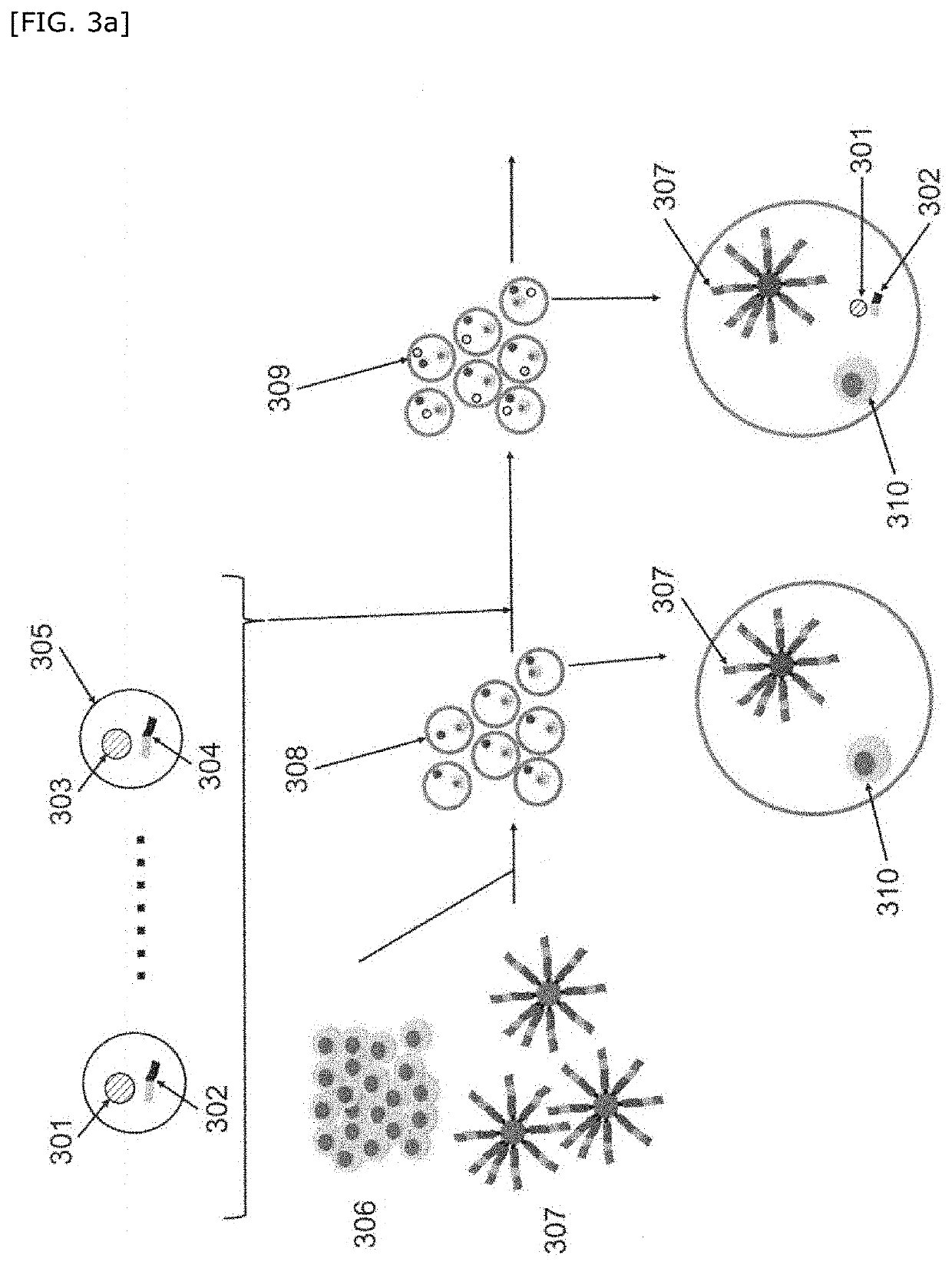Method for detecting genome-related information of cell coexisting with at least one type of test substance
a technology of genome-related information and cell, which is applied in the field of detecting genome-related information of cell coexisting with at least one type of test substance, can solve the problems of inability to obtain further information, especially cell genetic information, and the inability to effectively identify phenotype, so as to achieve the effect of effective detecting genome-related information
- Summary
- Abstract
- Description
- Claims
- Application Information
AI Technical Summary
Benefits of technology
Problems solved by technology
Method used
Image
Examples
example 1
[0349]Production Test of Compartment
[0350]In this experiment, a microfluidic device was used to confirm that a droplet simultaneously containing a drug (Lipoporysaccharide: LPS), a cell (THP1 cell) and a second barcode nucleic acid-linked bead (Macosko-2011-10 (V+), manufactured by ChemGenes (trademark)) was generated and could exist stably. For generation of a droplet (compartment) in the present Example, a flow focusing device was used according to the description of E. Z. Macosko et al., Highly Parallel Genome-wide Expression Profiling of Individual Cells Using Nanoliter Droplets. Cell. 161, 1202-1214 (2015). An RPMI1640 medium supplemented with 10% FBS was used as the aqueous phase, and LPS was dissolved at a concentration of 2 μg / mL. Droplet Generator oil for EvaGreen (manufactured by BioRad) was used in the organic solvent phase. The Droplet Generator oil for EvaGreen used in the organic solvent phase has oxygen permeability and is suitable for in-droplet culture of cells.
[035...
example 2
[0355]Confirmation test of Detection of Genome-Related Information of Cell Coexisting with Drug (LPS)
[0356]In this experiment, first, in a tube 1, an oligonucleotide linker added with a cholesterol modification (hereinafter, the oligonucleotide linker added with a cholesterol modification is also referred to as “anchor CMO”) (5′-3′ Cholesterol-TEG-GTAACGATGGAGCTGTCACTTGGAATTCTCGGGTGCCAA GG)-3′ (SEQ ID NO: 1)) and a cell were mixed in water. A commercially available product mentioned in http: / / sg.idtdna.com / site / Catalog / Modifications / Product / 2555 is used as the “3′ Cholesterol-TEG” in the oligonucleotide linker. Further, a THP1 cell was used as the cell, the cell concentration was 1×107 / mL, Phosphate Buffer Saline (PBS) was used as a solvent, and the final concentration of the anchor CMO was set to 250 nM. Incubation was performed at 4° C. for 5 minutes. A co-oligonucleotide linker added with the other cholesterol modification (anchor CMO: 5′-AGTGACAGCTGGATCGTTAC-3′ Cholesterol-TEG-3...
PUM
| Property | Measurement | Unit |
|---|---|---|
| culture time | aaaaa | aaaaa |
| culture time | aaaaa | aaaaa |
| culture time | aaaaa | aaaaa |
Abstract
Description
Claims
Application Information
 Login to View More
Login to View More - R&D
- Intellectual Property
- Life Sciences
- Materials
- Tech Scout
- Unparalleled Data Quality
- Higher Quality Content
- 60% Fewer Hallucinations
Browse by: Latest US Patents, China's latest patents, Technical Efficacy Thesaurus, Application Domain, Technology Topic, Popular Technical Reports.
© 2025 PatSnap. All rights reserved.Legal|Privacy policy|Modern Slavery Act Transparency Statement|Sitemap|About US| Contact US: help@patsnap.com



